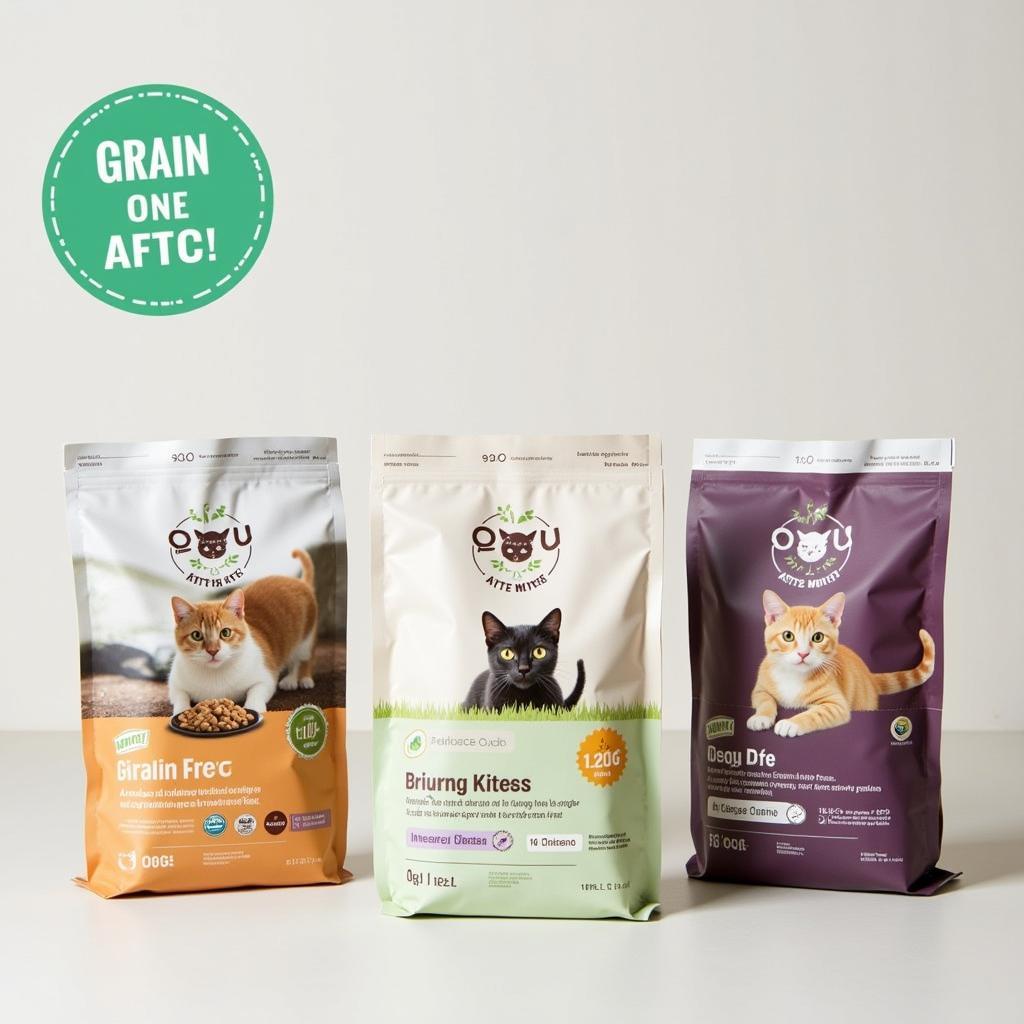Choosing the right food for your new kitten is a big responsibility! You want to ensure they’re getting all the nutrients they need to grow big and strong. With so many options available, it can be overwhelming, especially when considering a grain-free dry kitten food diet. This comprehensive guide is here to help you navigate the world of grain-free kitten food and find the purrfect choice for your furry little companion.
Why Consider Grain-Free Dry Kitten Food?
While grains aren’t inherently bad for cats, some kittens may benefit from a grain-free diet.
- Allergies and Sensitivities: Just like humans, some cats have sensitivities or allergies to certain grains like corn, wheat, and soy often found in commercial cat foods. These allergies can manifest in several ways, including digestive upset, skin irritations, and even behavioral changes.
- Improved Digestion: Cats have shorter digestive tracts compared to humans, making it more challenging to break down certain carbohydrates, including grains. Opting for a grain-free diet can be easier on their digestive system, potentially leading to improved nutrient absorption and reduced instances of vomiting or diarrhea.
Navigating the World of Grain-Free Dry Kitten Food
When searching for the right grain-free dry kitten food, it’s crucial to consider a few key factors:
1. Essential Nutrients for Growing Kittens
Kittens have specific nutritional needs to support their rapid growth and development. Look for a grain-free kitten food that is:
- Protein-Rich: A diet high in animal-based protein is crucial for healthy muscle growth and development.
- Fat for Energy: Kittens need higher fat content than adult cats to fuel their playful energy and overall development.
- DHA for Brain and Vision: DHA, an omega-3 fatty acid, is essential for optimal brain and vision development in kittens.
2. Reading Cat Food Labels: Decoding the Ingredients
Don’t be intimidated by ingredient lists! Here’s what to look for (and what to avoid) in your kitten’s grain-free food:
- Identify the Protein Source: The first ingredient listed should always be a named animal protein source, such as chicken, fish, or turkey.
- Avoid Vague Terms: Steer clear of generic terms like “meat by-products” or “poultry meal,” as they can indicate lower-quality ingredients.
- Limited Carbohydrate Sources: Grain-free doesn’t always mean low-carb. Look for alternative carbohydrate sources like sweet potatoes, peas, or lentils, which offer more nutritional value than fillers.
3. Transitioning to Grain-Free Kitten Food
When making a dietary change, it’s important to transition your kitten gradually. Start by mixing a small amount of the new grain-free food with their current food. Slowly increase the ratio of new food to old food over 7-10 days. This gradual transition can help prevent digestive upset and ensure your kitten adjusts well to their new diet.
Addressing Common Concerns About Grain-Free Diets
While grain-free diets can be beneficial for some kittens, certain concerns have been raised:
1. Taurine Deficiency: Taurine is an essential amino acid that cats need for heart health, vision, and reproduction. Ensure that the grain-free kitten food you choose is fortified with taurine.
2. Potential for Heart Issues: In recent years, there has been a potential link between certain grain-free diets and a heart condition called dilated cardiomyopathy (DCM) in cats. While research is ongoing, it’s essential to choose a high-quality grain-free food from a reputable brand that follows AAFCO nutritional guidelines.
 Selecting a Reputable Grain-Free Food
Selecting a Reputable Grain-Free Food
Grain-Free Doesn’t Mean Worry-Free: Consult Your Veterinarian
Remember, every kitten is unique. While this guide provides valuable information about grain-free dry kitten food, it’s essential to consult with your veterinarian. They can help you determine if a grain-free diet is right for your kitten based on their individual needs, breed, and health status.
Making the Best Choice for Your Tiny Feline
Choosing the right food for your kitten is a journey, and it’s okay to feel overwhelmed by the options. By focusing on high-quality ingredients, understanding your kitten’s needs, and working closely with your vet, you can confidently navigate the world of grain-free dry kitten food and provide your feline friend with the best possible start in life.
FAQs About Grain-Free Dry Kitten Food
1. Can I feed my kitten a grain-free diet if they don’t have allergies?
Even if your kitten doesn’t have allergies, a grain-free diet can still offer benefits like easier digestion. However, it’s crucial to choose a complete and balanced formula specifically designed for kittens.
2. What are some signs of food allergies in kittens?
Common signs of food allergies in kittens include vomiting, diarrhea, itchy skin, hair loss, and ear infections. If you notice these symptoms, consult your veterinarian.
3. Are grain-free diets more expensive?
Grain-free diets can be slightly more expensive due to the higher quality ingredients and manufacturing process. However, many affordable options are still available.
4. How can I be sure my kitten is getting enough taurine on a grain-free diet?
Look for grain-free kitten foods that are specifically formulated to meet AAFCO guidelines and contain added taurine.
5. What should I do if my kitten doesn’t like their new grain-free food?
Introducing a new food gradually is key. If your kitten is hesitant, try adding a small amount of warm water or bone broth to make it more enticing.
Looking for more kitten food options? Check out these articles:
- Feline Natural Canned Cat Food
- Sava Cat Food
- Evolve Wet Cat Food
- Gatto Food
- Kitten Wet Food Grain Free
Need help finding the perfect food for your furry friend? We are here for you!
Contact us at Phone Number: 02437655121, Email: minacones@gmail.com or visit us at 3PGH+8R9, ĐT70A, thôn Trung, Bắc Từ Liêm, Hà Nội, Việt Nam. Our dedicated customer care team is available 24/7 to assist you.